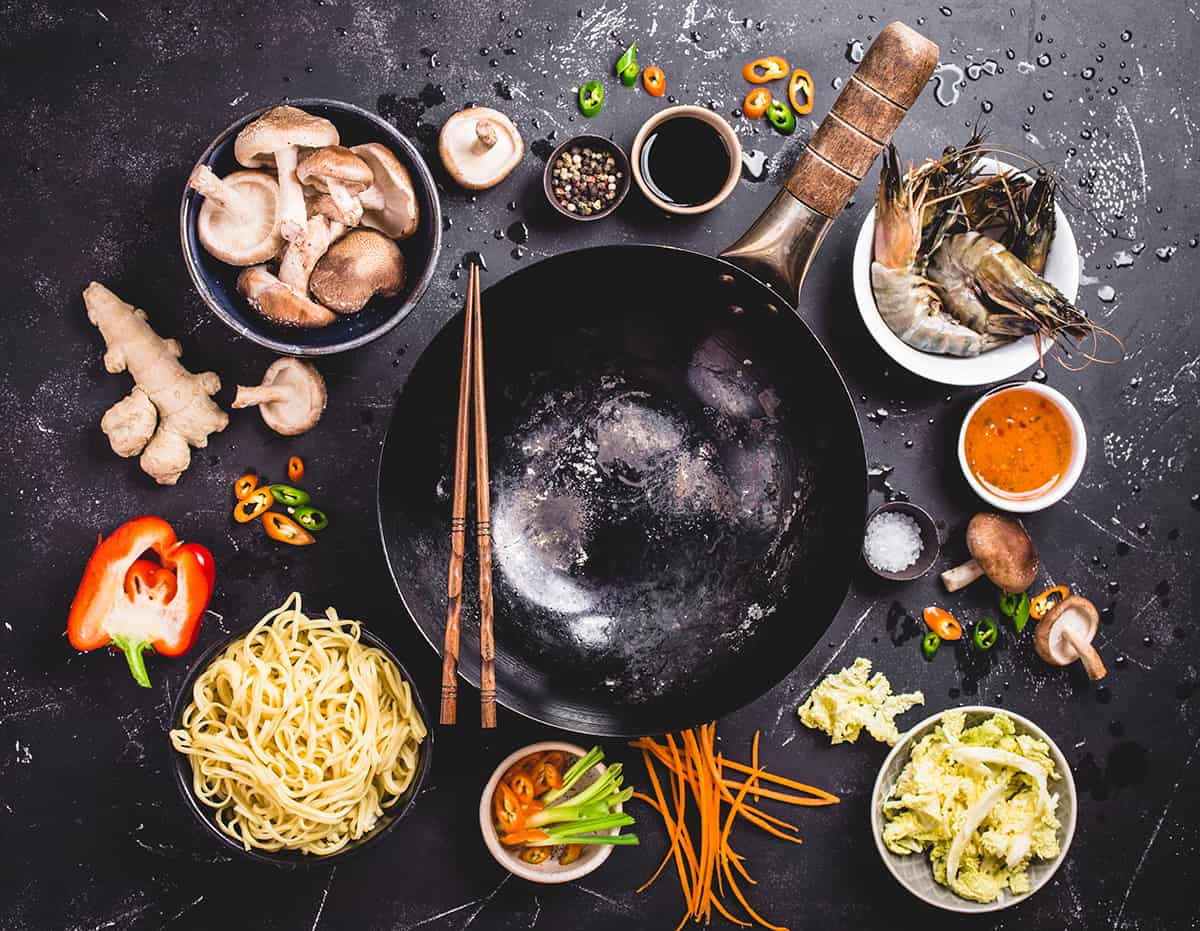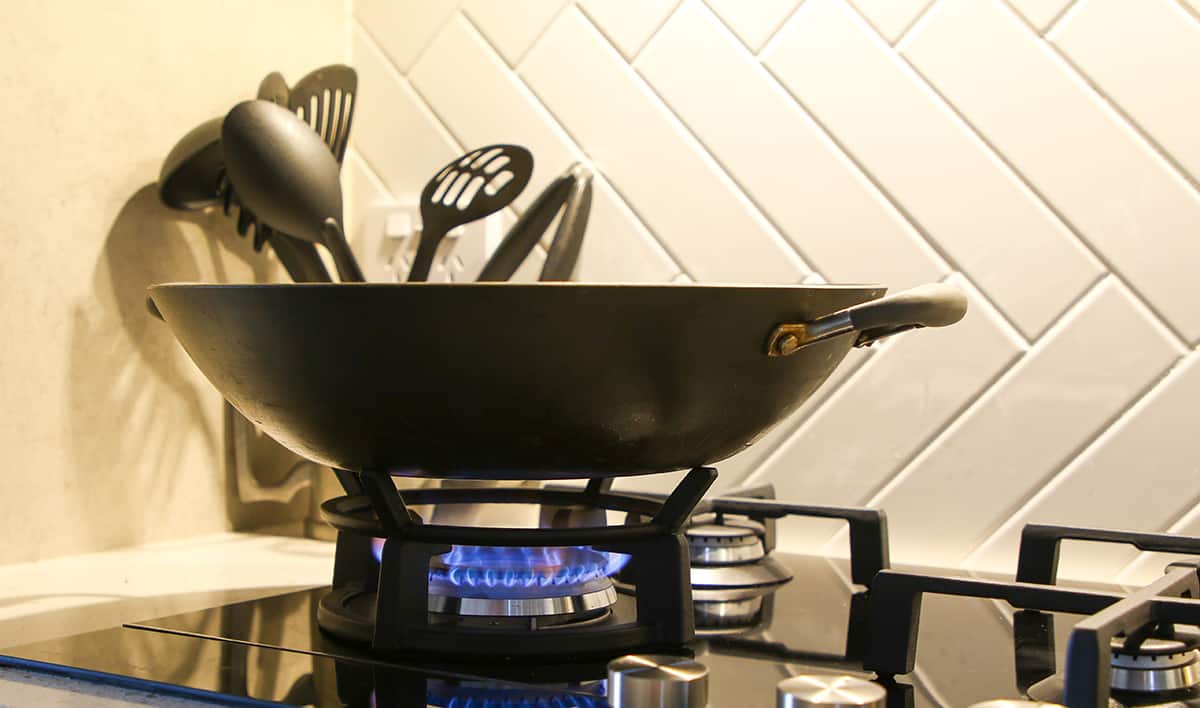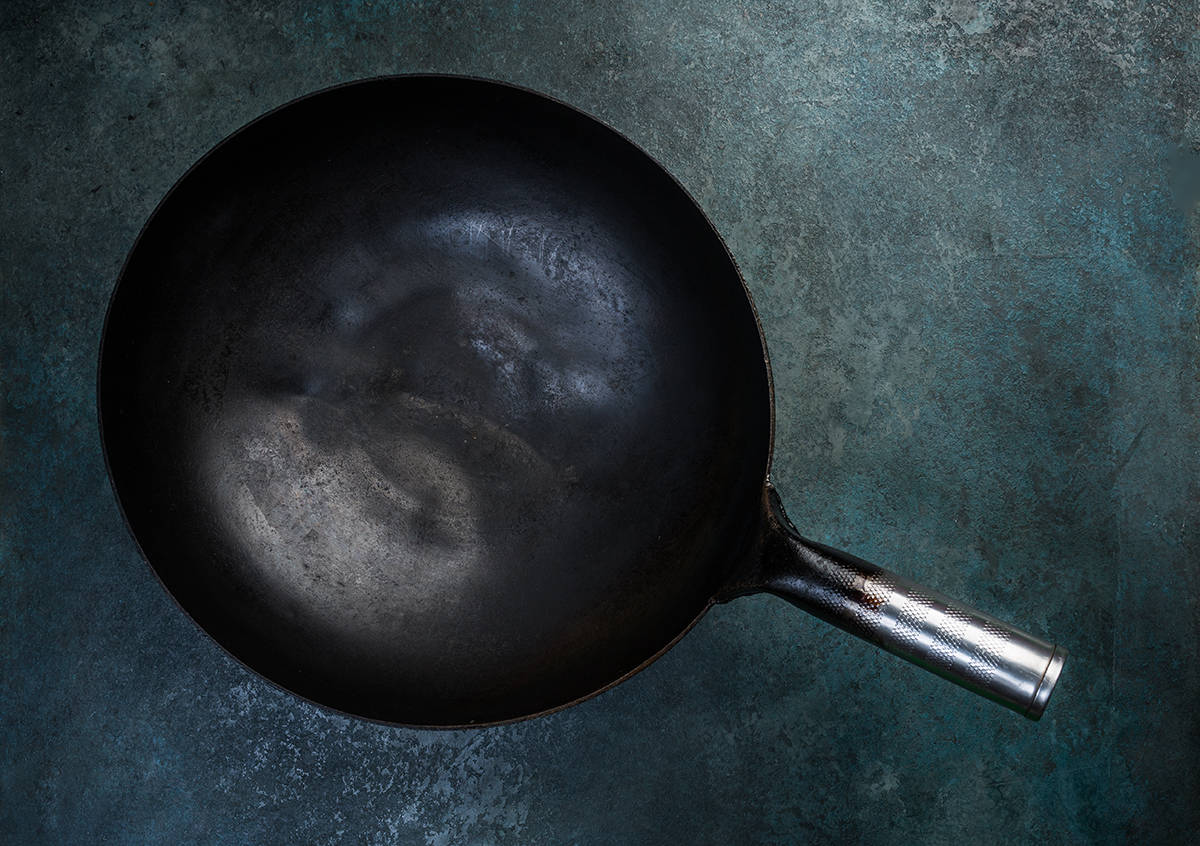A wok is an essential tool in Asian cooking because of its versatility. The shape of a wok is one of its defining characteristics; it provides a particularly sticky surface for cooking. However, sticking is a common issue for first-time wok cooks. Happily, a nonstick coating can be made in the wok by seasoning it in the oven.
Here’s how you can season your wok in the oven:
- Heat your oven to 425°F
- Rub oil on all of the surfaces of your wok.
- Place the wok upside-down inside the preheated oven for 30 minutes.
- Let it cool to room temperature.
There are a couple more things you should know about seasoning a wok in the oven, which I’ll describe later in this guide. I’ll also explain the differences between seasoning a wok in the oven and on a stovetop.
Why Do You Have to Season a Wok?

Seasoning a wok entails coating the pan with oil and heating it to a high temperature, which helps to create a natural non-stick surface and protects the pan from rust. The color and flavor of food cooked in a wok can be greatly enhanced by the addition of seasoning.
Woks can be protected from warping and discoloration with this method. Remember that a properly seasoned wok needs to be re-seasoned every few months or whenever the surface loses its shine or turns a different color.
Basically, if you want your wok to have a nonstick surface while also being durable enough to last for several decades, you should season your wok.
How to Season a Wok in the Oven
Follow these steps if you have yet to break in your brand-new carbon-steel wok.
1. Clean the wok
While your wok may look and feel clean, it most certainly isn’t. Woks come with oils and other manufacturing finishes that protect it during transport. You need to get rid of those oils in order to cook food with the wok safely.
To do this, wash it as you would any other cooking vessel. Place the wok in your sink and add about 2 teaspoons of dish soap. Now, vigorously rub the surface of the wok with the soap and the hard side of a sponge until all of the manufacturing residue is gone. You may need to repeat this step twice.
After you’re confident the wok is completely clean, proceed to the next step.
2. Preheat the oven the 425°F
Seasoning a wok or any other “seasonable” cooking tool is done with heat. The source of heat, in this case, is your oven, which you should preheat to 425°F for about 30 minutes. That way, the oven will be completely hot and ready to “bake” the oils into all of the tiny nooks and crevices on the surface of your wok.
3. Rub oil all over the surface of the wok
Even though the wok may be brand-new, that doesn’t mean the surface doesn’t contain minuscule crevices. Seasoning the wok will fill in the tiny gaps with heated oil, which creates a smooth, nonstick surface.
The next step is to rub oil all over the surface of the wok. However, you can’t use any oil. Ideally, you should use a type of cooking oil with a high smoke point that can withstand the superheated temperatures inside your oven without breaking down.
The best types of cooking oil to use when seasoning a wok are sunflower oil or peanut oil. These have high smoke points and have a neutral flavor, which will not affect the outcome of the dish you prepare in your wok after seasoning.
Make sure to rub the oil onto every metallic part of the wok, including the handles.
4. Place the wok upside-down in the preheated oven and bake for 30 minutes
After the oven is preheated, it’s time to stick the wok in there. Place it inverted on the middle rack and bake for 30 minutes. Don’t be tempted to open the oven door to gauge how far it has progressed since this can cause the temperature to drop significantly.
5. Let it cool to room temperature
After the 30-minute baking period is up, turn the oven off with the wok still inside. Wait for about 30 to 45 minutes for the wok to come back down to room temperature on its own.
After 45 minutes have passed, take the wok out and leave it on a clean, dry spot on your counter for an additional 30 minutes.
6. Finishing steps
If everything went according to plan, then the wok should be completely seasoned and ready to go. However, if you want to go the extra mile to ensure the wok is properly seasoned, you can try stir-frying an onion in 2 tablespoons of oil on medium-high heat on your stove.
Now, throw the onion away and wait for the wok to come back down to room temp. Wash the onion in your sink without dish soap while using the soft side of your sponge. Finally, heat the cleaned wok in your oven to dry it out, and you’re done!
Oven vs. Stovetop Seasoning

To season a wok, you can either use the oven or the stovetop, each of which requires a unique set of skills and yields distinctive results.
To season a wok in the oven, one coats it with oil and heats it at a high temperature (typically 425°F). All of the wok’s surface can get seasoned in this way, and any excess oils or residue from production can be washed away.
In contrast, stovetop seasoning calls for heating the wok over a burner and oiling it several times while cooking. The wok’s surface can be cleaned of any lingering oils or residue from production, and a natural patina can be developed. It’s a lot quicker than seasoning an oven, too.
The difference between these methods of seasoning is that an oven can do it much more evenly than a burner on a stove. This is because the oven heats the wok from all directions, whereas you would have to constantly move the wok on the burner in order to heat every square inch of its surface.
What If the Wok Has a Wooden Handle?
If your wok has a wooden handle, you can try covering the handle in 2 or 3 layers of aluminum foil. The foil will prevent some of the heat from burning the wooden handle to a char. Alternatively, you can season the wok on a stove. This guide will give you clear instructions on how to do it.
How to Maintain the Seasoning on a Wok
Here’s how you can preserve the seasoning on your wok:
- Use a dry cloth or a metal scrubber to remove any leftover food particles from the wok after each use. Do not use soap or water, as doing so may wash away the seasoning.
- The best way to free food stuck to a wok is to heat it for a few minutes over high heat with a small amount of oil.
- After washing, re-season the wok by rubbing some oil around the inside.
- For best results, heat the wok over high heat for a few minutes to allow the oil to fully permeate the surface and produce a nonstick finish.
- After using, let the wok cool down before putting it away.
Cleaning the wok with abrasive materials or strong detergents can ruin the seasoning and should be avoided at all costs. High-heat cooking with acidic foods like tomato sauce or vinegar can also remove the seasoning, so you should try to avoid doing that.






